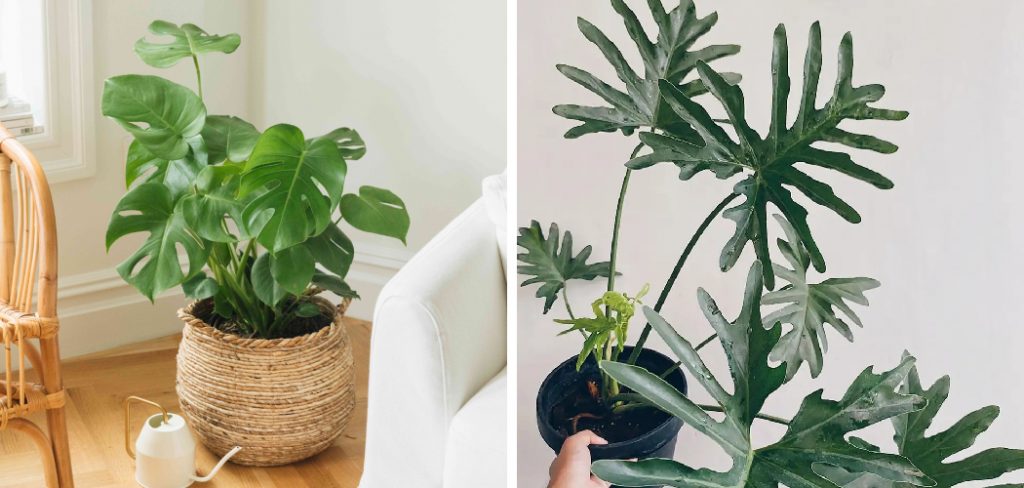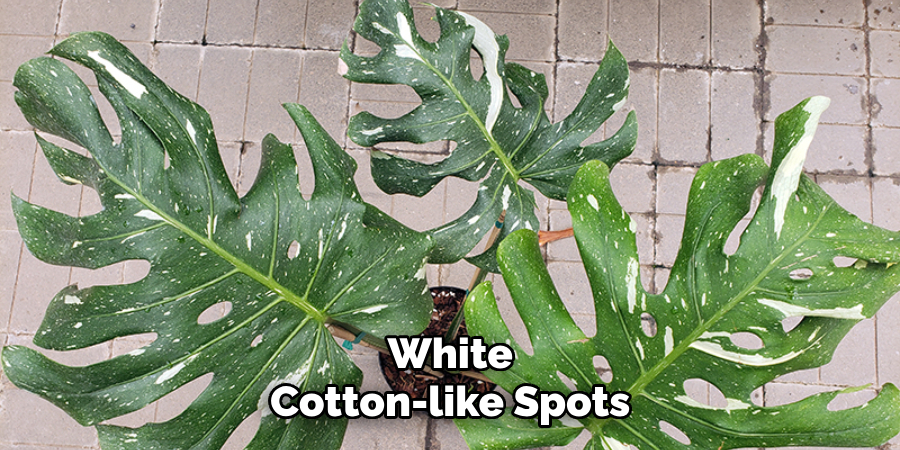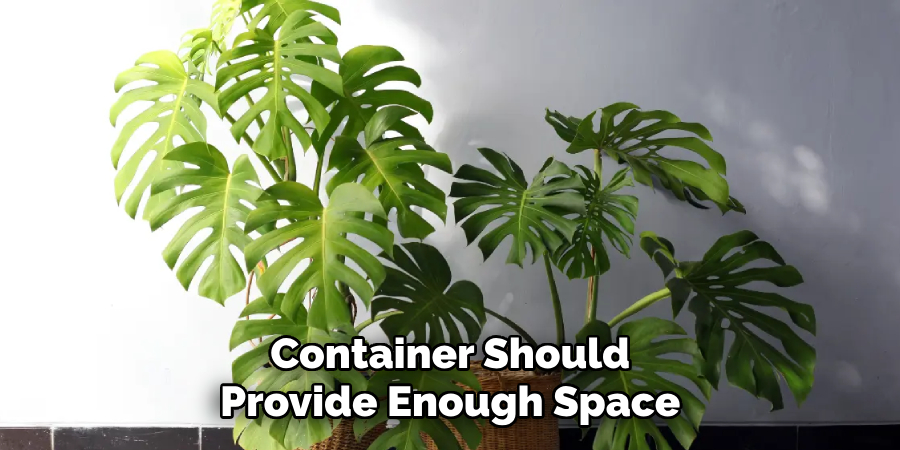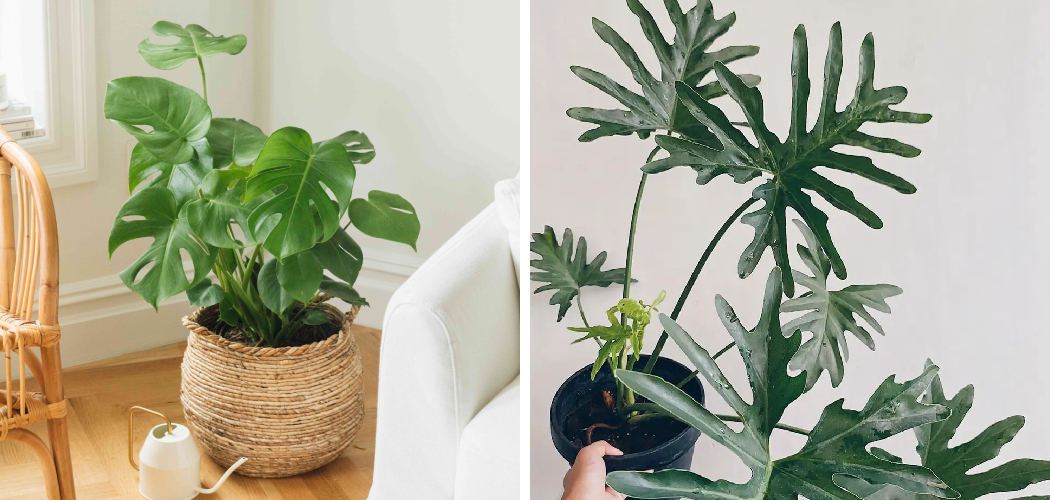To care for split leaf philodendron, provide bright indirect light and water when the top inch of soil is dry. Split leaf philodendron, also known as monstera deliciosa, is a popular houseplant known for its large, unique leaves with splits and holes.
It is native to the tropical rainforests of central and south america. Caring for this plant is relatively easy, making it a popular choice for both beginners and experienced plant enthusiasts. We will discuss the optimal conditions for split leaf philodendron, including light, water, humidity, and fertilization.
We will also address common issues that may arise and how to troubleshoot them to ensure the health and longevity of your plant. Whether you want to add a touch of tropical vibe to your home or office, the split leaf philodendron is a beautiful and resilient plant that is sure to make a statement. So let’s get started on how to care for this stunning houseplant.

How to Care for Split Leaf Philodendron: Step by Step Guide
Understanding Split Leaf Philodendron
Understanding split leaf philodendron can help you care for this stunning plant better. This plant, also known as monstera deliciosa, has large, unique leaves with deep cuts or splits. Its distinct characteristics make it easy to recognize. The leaves can grow up to 3 feet long and create a tropical atmosphere in any indoor space.
Split leaf philodendron plants are not only aesthetically pleasing but also provide various benefits. They can purify the air by removing toxins and increase humidity levels. Additionally, they require minimal maintenance, making them ideal for busy individuals. The presence of these plants enhances well-being and creates a calming environment.
With their eye-catching appearance and easy care requirements, split leaf philodendron plants are a great addition to any indoor setting.
Creating The Perfect Environment For Your Split Leaf Philodendron
Split leaf philodendrons require specific care to thrive in your home. When choosing the ideal location for your plant, consider a spot with bright, indirect sunlight. Avoid placing it in direct sunlight, as this can scorch the leaves. Maintaining the optimal temperature and humidity levels is crucial.
Aim to keep the temperature around 65-85°f (18-29°c) and the humidity between 40%-70%. To achieve this, mist the leaves regularly or use a humidifier. Additionally, ensure proper drainage by using a well-draining soil mix and a pot with drainage holes.
Overwatering can lead to root rot, so allow the soil to dry out slightly between waterings. With the right environment and care, your split leaf philodendron will thrive and become a stunning addition to your home.
Watering And Fertilizing Techniques For Split Leaf Philodendron
Split leaf philodendron require specific watering and fertilizing techniques to thrive. Understanding the plant’s watering needs is essential. Establishing a consistent watering schedule is important. Using appropriate fertilizers and feeding methods is key to maintaining the plant’s health. Adjusting the watering frequency based on the plant’s environment and season is crucial.
Overwatering can lead to root rot, so it’s important to allow the soil to dry between waterings. Additionally, using a well-draining potting mix can prevent waterlogged soil. When fertilizing, choose a balanced formula specifically designed for foliage plants. Apply the fertilizer according to the instructions on the label.
Regularly monitoring the plant for signs of nutrient deficiency or excess can help ensure optimal growth. By following these watering and fertilizing techniques, you can provide the best care for your split leaf philodendron.
Pruning And Propagation Methods For Split Leaf Philodendron
Properly caring for your split leaf philodendron involves effective pruning and propagation techniques. Pruning is essential for promoting healthy growth and should be done when necessary. Identifying the right time to prune is crucial for maintaining the plant’s overall health.
While pruning, ensure you use the correct methods, such as removing dead, damaged, or overgrown branches. Additionally, learning how to propagate your split leaf philodendron through stem cuttings can help you expand your collection. Stem cuttings should be taken from healthy, mature plants and placed in water or well-draining soil to encourage root development.
As you care for your split leaf philodendron, remember to monitor its watering and lighting requirements, ensuring it thrives in its environment. Keep your philodendron healthy and flourishing with these pruning and propagation techniques.
Common Pests And Diseases Of Split Leaf Philodendron
Split leaf philodendron is a beautiful plant that requires proper care to thrive. One common issue faced by these plants is pest infestations. Recognizing common pests such as aphids, mealybugs, and scales is crucial for effective treatment. Regularly inspect your plant for signs of infestation, such as sticky residue, white cotton-like spots, or tiny moving insects.

To combat pests, use organic pesticides or simply wipe them off with a damp cloth. Prevention is key, so ensure your plant receives sufficient sunlight, proper watering, and good air circulation. Split leaf philodendron can also suffer from various diseases and disorders, such as root rot and leaf spots.
It’s essential to understand the symptoms and manage them appropriately. Adjust watering practices, improve drainage, and remove any infected leaves to prevent the spread of diseases. By practicing proper care techniques and promptly addressing issues, you can help your split leaf philodendron thrive and stay pest and disease-free.
Troubleshooting Common Issues With Split Leaf Philodendron
The yellowing leaves of a split leaf philodendron can indicate numerous causes including overwatering or inadequate lighting. Correcting these issues will help restore the plant’s health. Brown spots on the leaves can be a sign of fungal or bacterial infections.
Identifying the underlying problem is crucial to determine the appropriate treatment. Leaf drooping is often due to underwatering or excessive sunlight exposure. Adjusting the watering schedule and providing shade can help address this issue and prevent further damage. Regularly inspecting your split leaf philodendron and promptly addressing any issues that arise will ensure its well-being.
Remember to maintain a balance of sunlight, water, and nutrients to keep your plant thriving.
Repotting And Transplanting Split Leaf Philodendron
Caring for a split leaf philodendron involves knowing when and how to repot the plant. Repotting is necessary when the roots outgrow the current container. When repotting, it is important to choose the right potting soil and container. Opt for a well-draining soil mix that allows water to flow freely and prevents root rot.
The container should provide enough space for the roots to grow and have drainage holes to avoid waterlogged soil. To ensure successful repotting and minimize transplant stress, follow these tips. Gently remove the plant from its current pot, being careful not to damage the roots.

Trim any damaged or overgrown roots before placing the plant in a new container with fresh soil. Finally, water the plant thoroughly after repotting, allowing the water to drain. By following these guidelines, you can keep your split leaf philodendron healthy and thriving.
Conclusion And Additional Tips For Split Leaf Philodendron Care
Caring for your split leaf philodendron is essential to ensure it stays healthy and vibrant. Recap the key points: provide bright indirect light, water thoroughly but let soil dry out between waterings, fertilize monthly during growing season, and repot every 2-3 years.
Additionally, here are some extra tips: regularly dust the leaves to allow them to breathe, mist the plant to increase humidity, and avoid placing it in drafts or direct sunlight. Moreover, make sure to keep an eye out for pests such as spider mites or mealybugs, and promptly treat any infestations.
In addition, consider rotating your plant periodically to ensure even growth. By following these best practices, you can enjoy a beautiful and thriving split leaf philodendron in your home or office.
Frequently Asked Questions Of How To Care For Split Leaf Philodendron
How Often Should I Water My Split Leaf Philodendron?
Water your split leaf philodendron when the top inch of soil feels dry. It’s better to underwater than overwater, as excessive moisture can lead to root rot. Ensure proper drainage to prevent waterlogging.
How Much Light Does A Split Leaf Philodendron Need?
Split leaf philodendrons thrive in bright indirect light. Place them near a north or east-facing window. Direct sunlight can burn their leaves, so avoid placing them in a south or west-facing window.
How Do I Propagate A Split Leaf Philodendron?
To propagate a split leaf philodendron, take stem cuttings with at least two leaves and place them in water or moist soil. Keep the cuttings in a warm and humid environment until roots develop. Then transfer them to a pot with well-draining soil.
How Do I Prevent Pests On My Split Leaf Philodendron?
Inspect your split leaf philodendron regularly for pests like mealybugs, aphids, and spider mites. Wipe the leaves with a damp cloth to remove any insects. You can also use insecticidal soap or neem oil to control the pest infestation.
How Do I Prune My Split Leaf Philodendron?
Pruning is essential to maintain the shape and size of your split leaf philodendron. Remove dead or yellow leaves to encourage new growth. Trim overgrown branches at the stem to maintain a compact shape. Ensure you use clean, sharp pruning shears for the process.
Conclusion
Overall, caring for a split leaf philodendron can be a rewarding and enjoyable experience. By following the guidelines outlined in this blog post, you can ensure that your plant thrives and remains healthy. Remember to provide the right amount of light, water, and humidity, as well as regular fertilizer and occasional pruning.
Pay attention to any signs of distress or disease, and take prompt action to address them. Additionally, be mindful of the specific needs of your split leaf philodendron and adjust your care routine accordingly. With the proper care and attention, your split leaf philodendron will flourish, adding beauty and greenery to your indoor spaces.
So go ahead, bring this stunning plant into your home and enjoy the benefits of its lush foliage for years to come.

